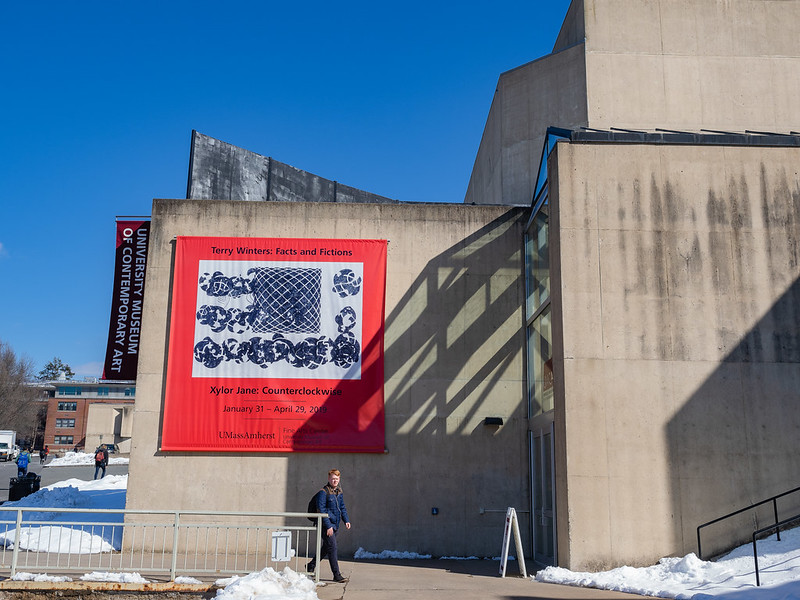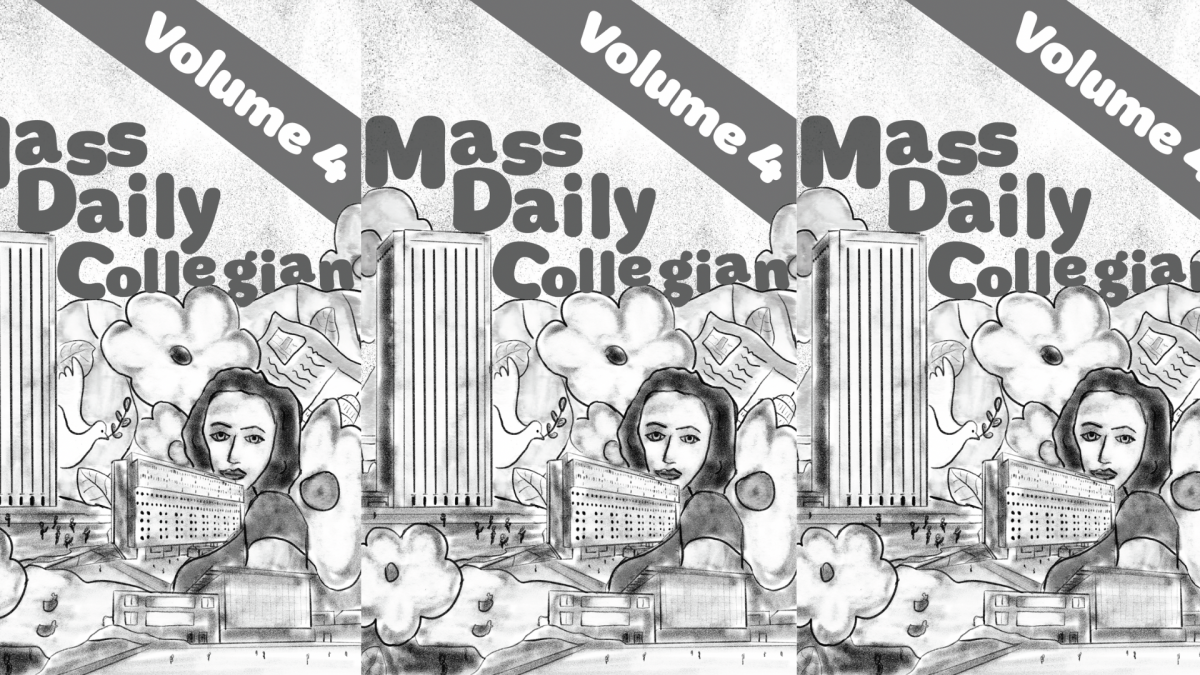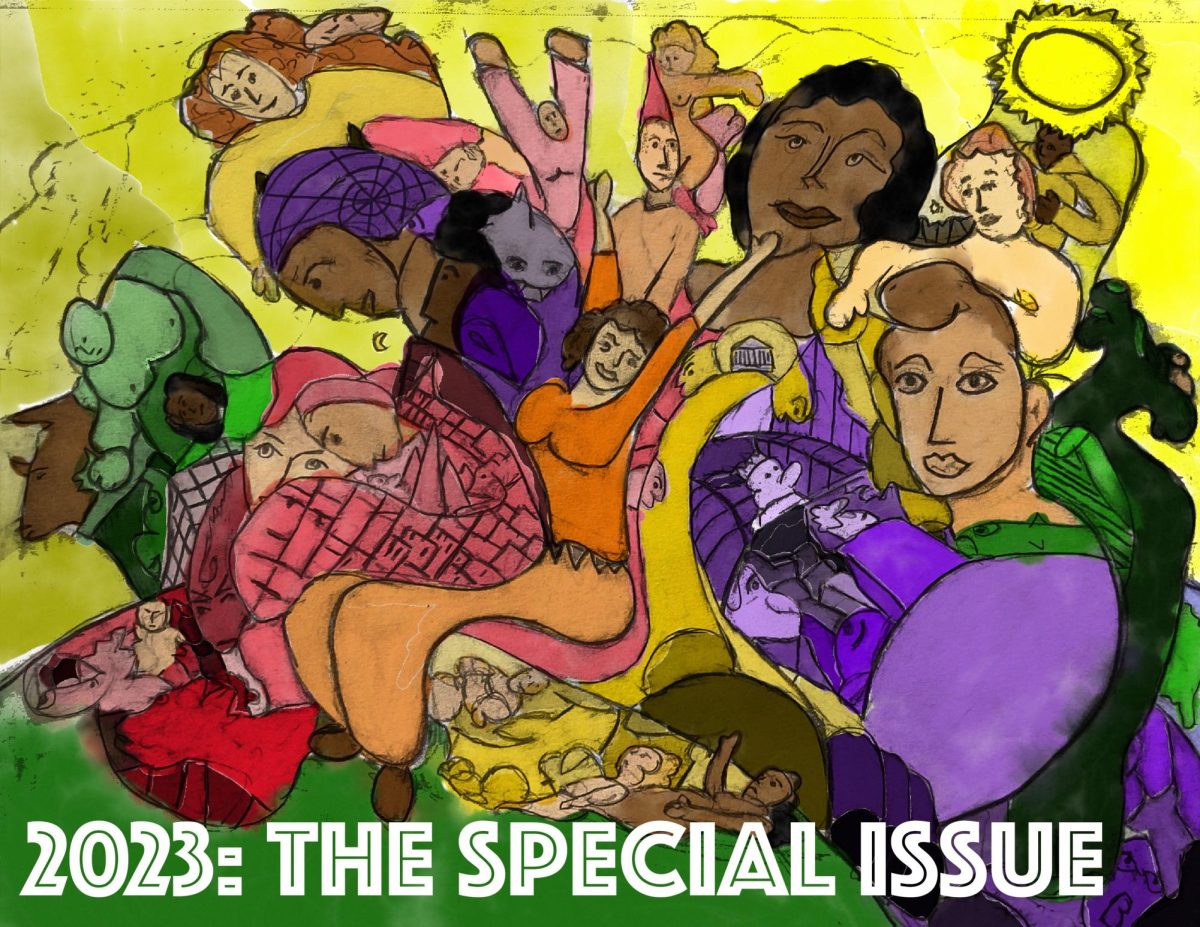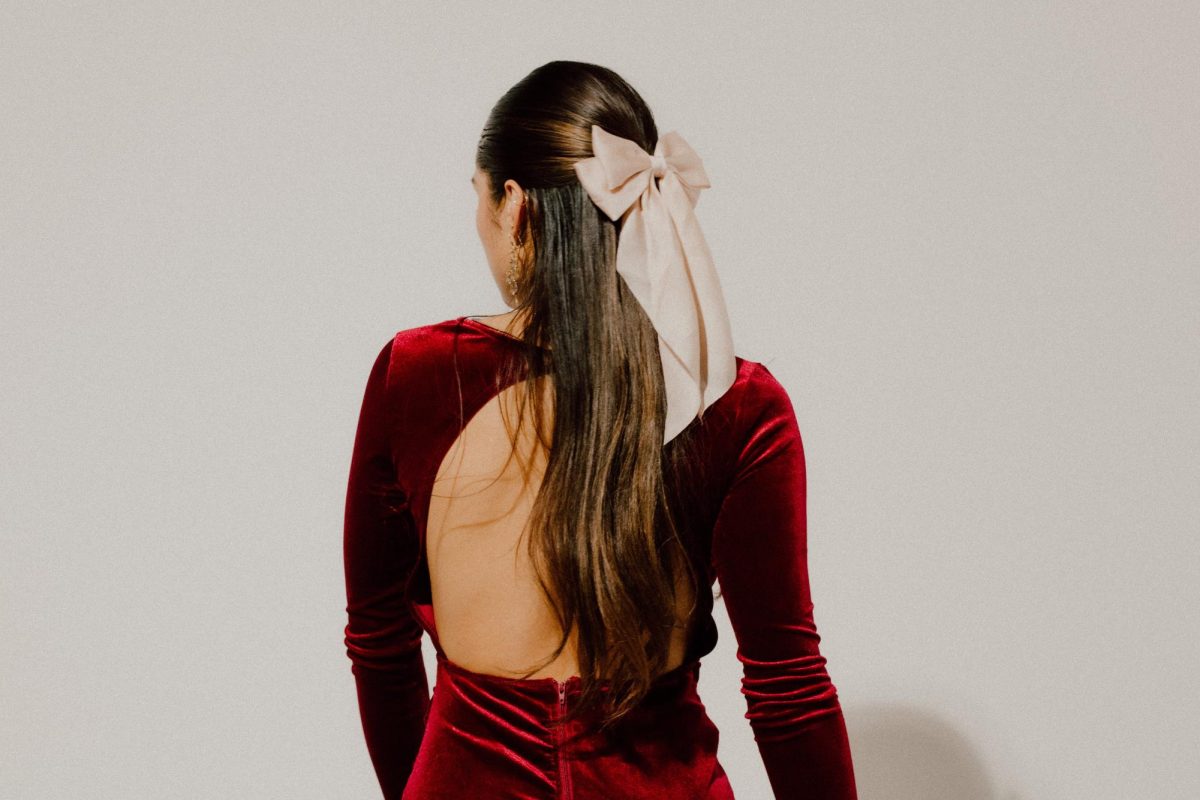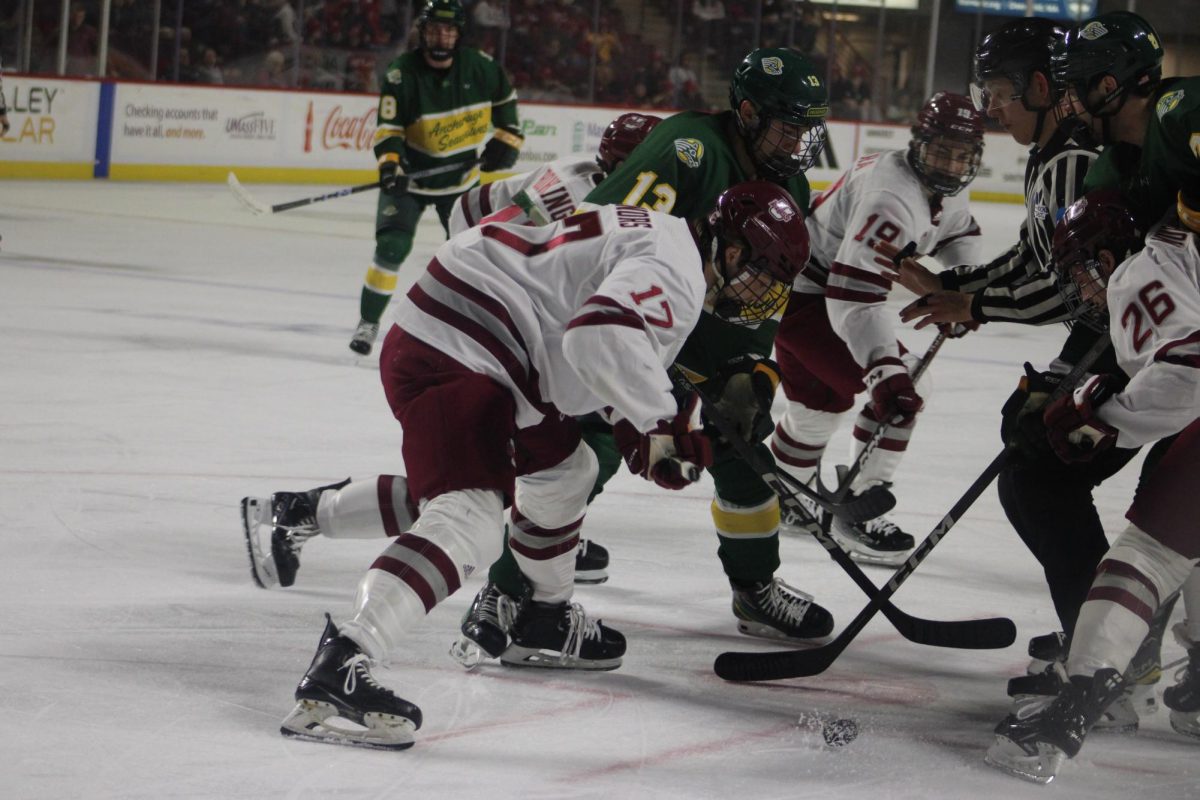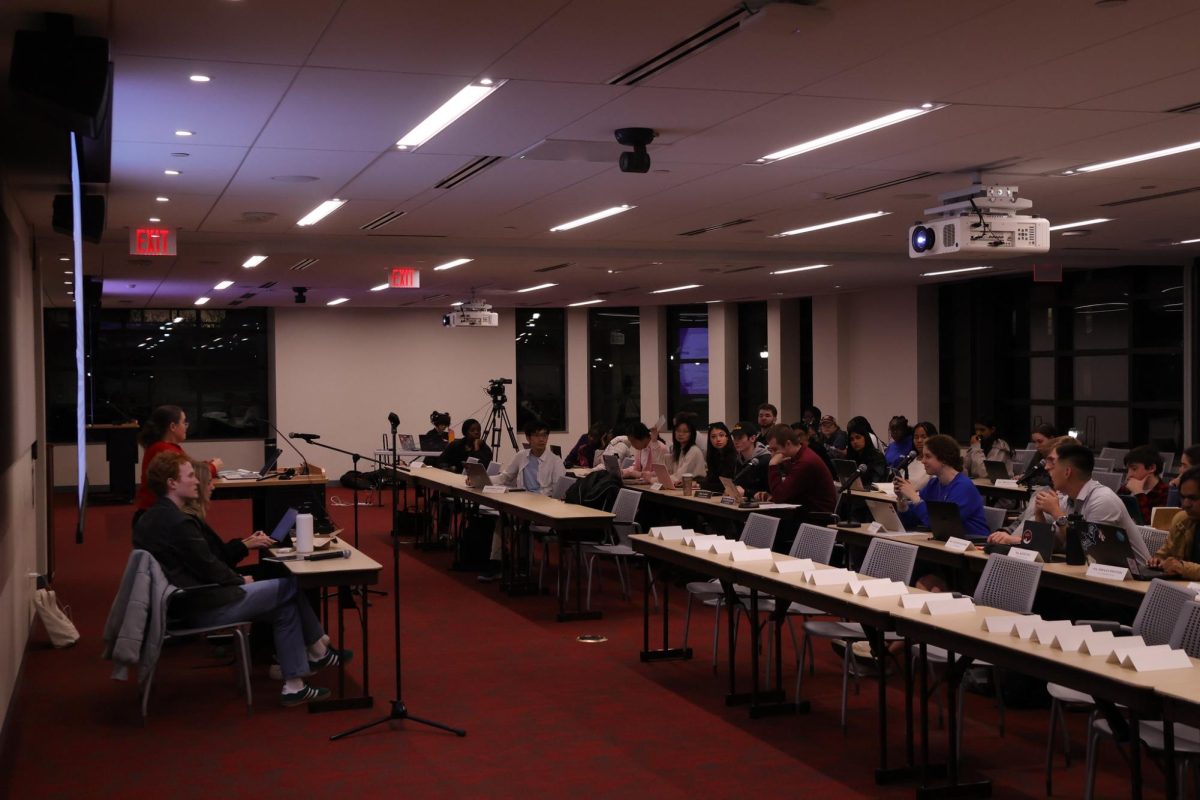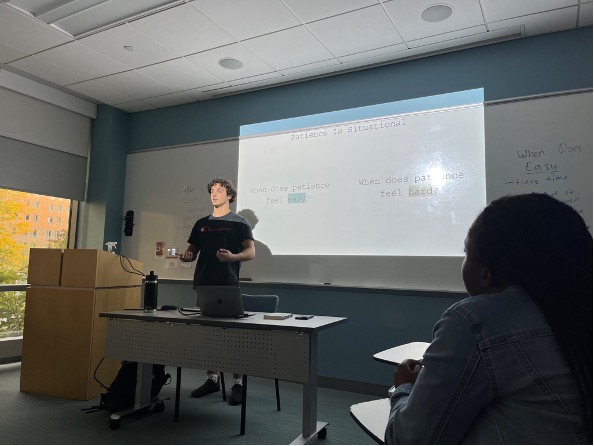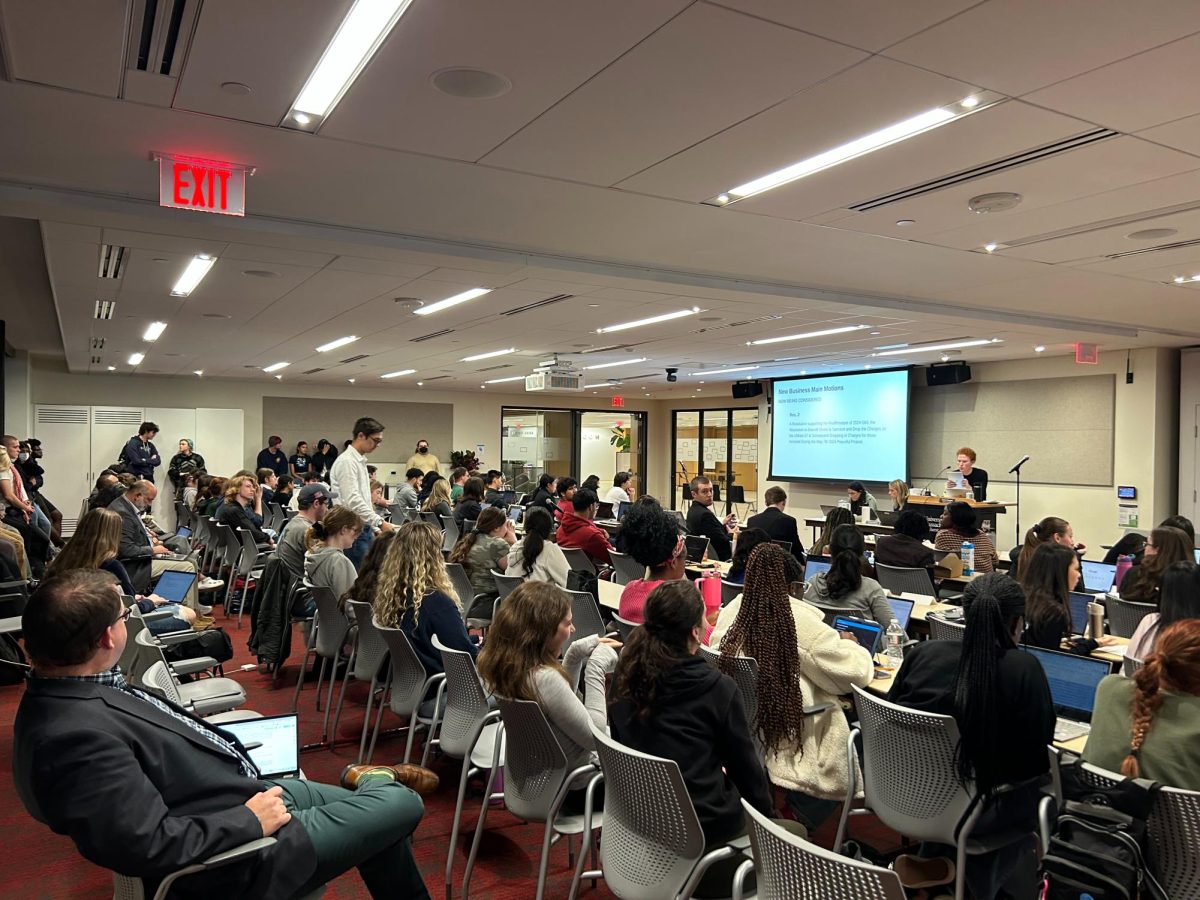While walking through the “Masculine Identities: Filling in the Blanks” exhibit in the University Museum of Contemporary Art, visitors are challenged with portrayals of masculinity, gender identity, culture and sexuality. The exhibit’s mix of photography and art tackles the meaning of masculinity as a part of identity, and the ways in which it can be defined in the world.
Open through March 23 to May 14, “Masculine Identities” attempts to break the perceptions of masculinity that are often filled with the societal pressure to be strong.
The exhibit was curated by art history graduate students Lawrence Gianangeli and Samit Sinha. After extensive research and exploring various works of art, the finished exhibition showcases a wide range, from pieces that are obvious in their message, to ones that are more subtle.
“Since we were going by masculinity it made sense to find images that struck us in some way. There is a man in this image, or it’s telling us something about masculinity, or in some way it’s subverting us to something about masculinity,” Sinha said.
An image featured in the exhibit is titled Chez Mondrain, Paris, taken by André Kertész. It shows a staircase through a doorway with a flower vase towards the forefront of the composition. This image pushes that visitors must see past any preconceived notions about gender identity. “How is gender assigned to abstract elements like lines, curves, light and dark? How might our understanding of gender identity affect our perception of the work?” asks the image’s corresponding text.
“We are thinking super broadly in terms of masculinity and it goes beyond the identities of individuals and leaks into our understanding of the world as we know it, and objects we see, and ideas… Where are we seeing masculine forms in a photograph of not figurable objects? Where are we seeing feminine forms? And then really the ultimate goal is to question why am I even assigning gender, or even personifying a glass vase, or a flower, the curve of a staircase?” Sinha said about the Kertész photograph.
Another piece featured is a work by Adam Helms. In this piece, Helms worked with a picture of “Bloody Bill” Anderson, a Confederate guerilla soldier in the Civil War. The picture of Anderson was taken after he was captured and killed, and he lies dressed in formal attire, holding a gun. Helms combined this photo with a balaclava, connecting history with present ideas of war.
“The artist is defacing him. He wants to shame him. So we’re hoping to also contribute to not shaming masculinity, but understanding that there is a type of corrosive machismo that exists, that is being inflated by masculinity in the general culture. We are trying to say that’s not right. That’s not how identity functions,” Gianangeli said.
Another image shows a man’s arm, covered in tattoos with his hand in a fist. Villa draws tattoos directly onto the image and the corresponding plaque next to the image explains that artist Carlos Villa “reimagines traditional symbols of ethnicity and masculinity.”
“In some of these cultures, tattoos are traditionally associated with signifying masculinity, power, and prestige… Consider how this image conveys a message about Villa’s cultural, ethnic, and gender identity,” asks the text explaining Villa’s photograph.
Ultimately, Gianangeli and Sinha expressed that by creating this exhibit, they are not providing answers. By representing a range of stories and ideas across various identities, the exhibit’s goal is to have visitors build their own interpretations, understand that masculinity can take many different forms and be applied in many different settings.
“What’s really important is that we are not providing answers. We make assumptions that there are preconceived notions coming into this … what we want to do is address them and break them down, but what they morph into is in the individual and how they understand by interacting with these works of art,” Gianangeli said. “There is a premise, and there is a curated thought process we hope happens, but the actual result of that and what comes out of that isn’t answerable from our end.”
Eve Neumann can be reached at [email protected].

